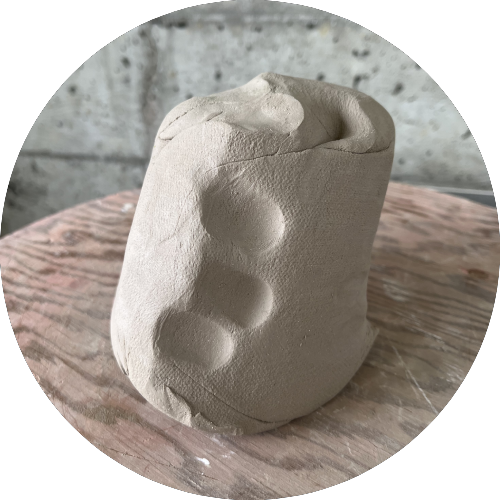Indexical
Artist
Clay is formed from the ebb and flow of glaciers—ice rubbing the rocks into fine powder—all in geological time. Almost everybody has had an interaction with clay as a child. Clay is indexicat, most obvious is fingerprints pressed into the clay. Clay and flesh have similar weights. Clay records activity: think of fossilized foot prints in clay mud. Clay is a most abundant material on the face of the earth.
Gailan Ngan works and lives in Vancouver and occasionally works from Hornby Island, BC. Her practice involves pottery, sculpture and co-managing her late fathers’ art estate. Ngan collects material from many sources, commercial and gathered from nature. Her ceramic sculpture’s accumulate layers of fused surfaces into compositions of texture and colour. She graduated with a BFA from Emily Carr University in 2002. She has shown work at Cooper Cole, The Apartment, San Diego Art Institute, Nanaimo Art Gallery, Art Gallery at Evergreen, Kamloops Art Gallery, Unit 17 and The Vancouver Art Gallery.
Gailan Ngan
Poke the clay. What does it reveal?
Invitation
Get a block of pottery clay. Touch the clay. Think of clay as an indexical material.
Break off a chunk and hold it in your hand. Think of clay having the same weight as flesh. Think of materials in terms of weight.
Poke the clay. What does it reveal?
Play with the clay: roll, pound, flatten, shape. How does clay fit into your body? In the hand, internally, architecturally, in dreams, in narratives, etc..
Look at a ceramic artifact from thousands of years ago (brick, goddess figure, pottery, cave painting, etc). Who made it? Can you see the maker in the clay? Where did the item belong? How was it used?
Now write about any or all of items 1-5. Keep asking yourself: what is clay telling me?
